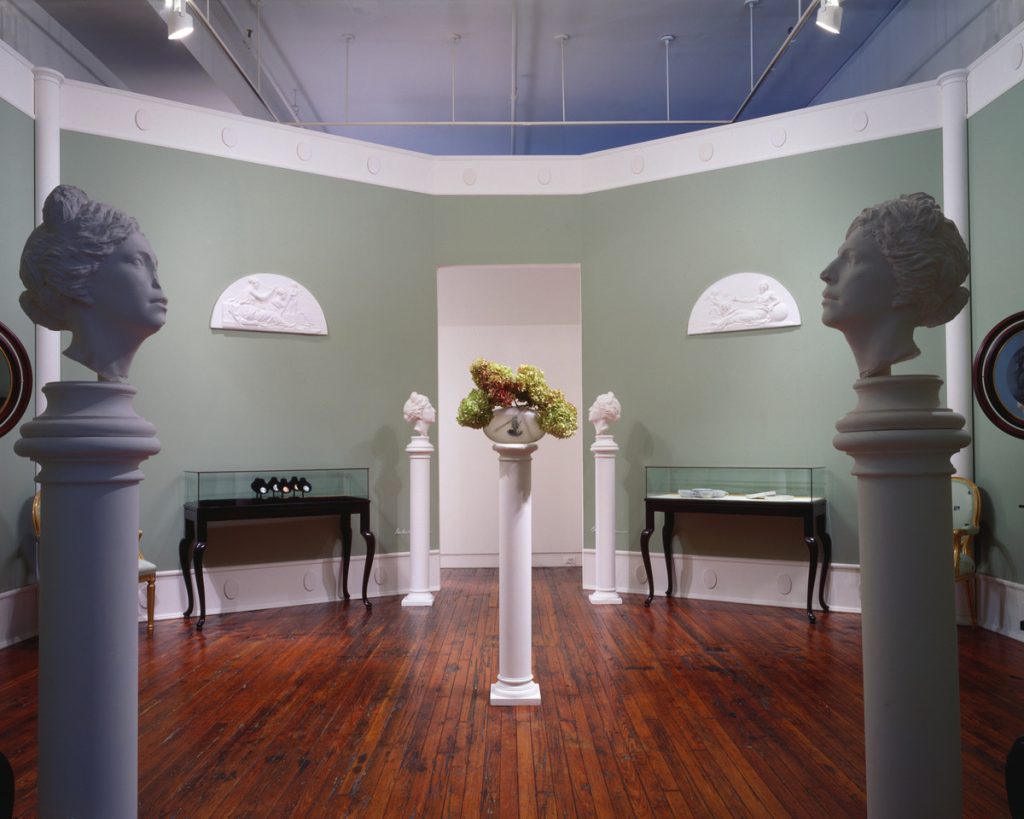Art World
Inside the Project to Build a Photo Archive of Historic New York Gallery Shows
The Independent fair and the L.A.-based nonprofit Contemporary Art Library have joined forces on the initiative.

The Independent fair and the L.A.-based nonprofit Contemporary Art Library have joined forces on the initiative.

Brian Boucher

A new project promises an in-depth record of the history of New York art gallery exhibitions, aiming to flesh out art history and platform a rich archive. The New York Gallery History Project will be free and available to all art historians and other researchers.
It’s an initiative of the Independent art fair and Contemporary Art Library, a Los Angeles nonprofit founded in 2021 that grew out of Contemporary Art Daily, an indispensable database of exhibitions worldwide.
“I’ve been a fan of Contemporary Art Daily for years,” said Independent founder Elizabeth Dee. “I think I was one of the first galleries to post on the site.” She and Lisa Darms, the executive director of the Hauser & Wirth Institute, were talking over lunch about how to ensure accurate reflections of history. Darms then put Dee in touch with Forrest Arakawa-Nash, the head of the Contemporary Art Library, who told her about a dream project of identifying gallerists who were central to their time and ensuring their archives are accessible.
The first gallery to be highlighted is Jay Gorney Modern Art, which was open from 1985 to 1999 and showed an incredible array of artists who have since been beatified as art-historical giants.
“It’s very kind of Elizabeth and Forrest to want to work with my gallery,” said Gorney, who recalled an array of significant exhibitions that he staged.
“One is hard pressed to pick certain shows, but there was Barbara Bloom’s The Reign of Narcissism, an extraordinary installation. Haim Steinbach’s Adirondack Tableau was a gallery-spanning architectural piece that one still remembers. There were Gillian Wearing’s videos, David Deutsch’s Rotunda paintings, and Joel Otterson’s Disco Bed/Rocking ‘Craftmatic’ Disco, Canopy Bed, that played nonstop disco tunes. Jessica Stockholder’s shows in the early ‘90s were influential to so many artists, and there was Martha Rosler’s show of airport photographs ‘In the Place of Public,’ the Tim Rollins + K.O.S. show of Scarlet Letter paintings, James Welling’s show of railroad photographs, and Alexis Rockman’s monumental paintings. One could go on!”

Installation view of a group saw of Haim Steinbach, James Welling, Sarah Charlesworth, and Meyer Vaisman at Jay Gorney Modern Art, 1988. Courtesy Jay Gorney.
It’s only through an accident of administrative history that the first piece of the new archive exists at all.
“My paper archive is spotty, because a great deal was lost in Hurricane Sandy,” said Gorney, “but happily my photo archive was in a different place and is complete. I have no idea how many photos there are. It’s all analog, in dozens of binders in the form of four-by-five color transparencies and slides and eight-by-10 black-and-white press photos. All that needs to be digitized, which is why this is particularly welcome.”
Archives aren’t lost only in physical disasters, but also in digital decay. People may think that the internet is forever, but it’s really anything but, Arakawa-Nash pointed out.
“There are so many times,” Arakawa-Nash said, “where a gallery that we think of as so central and important and a fixture closes and then 18 months later someone’s debit card expires and suddenly the website is gone and a corner of art history has disappeared.” Arakawa-Nash said they hope that the model can be extrapolated to other cities as well.
Gorney is convinced that the project will help ensure a more detailed account of art history.
“We come to see certain artists differently over time as they become successful and the way they are presented changes with the different galleries that show them,” he said, “but it’s really important to see things as they were originally meant to be seen by the artists.”